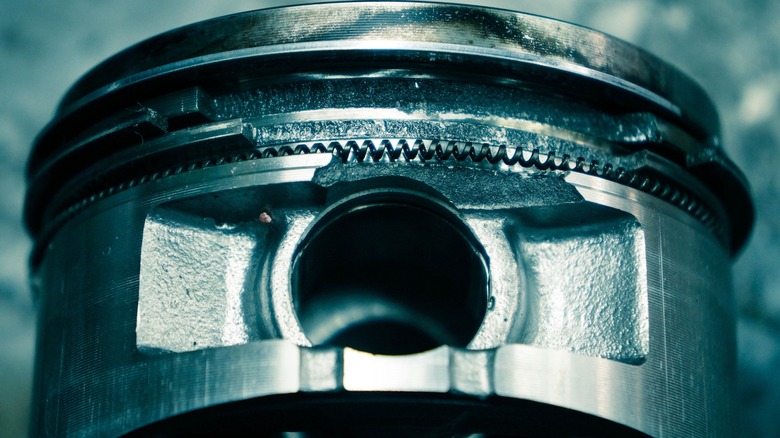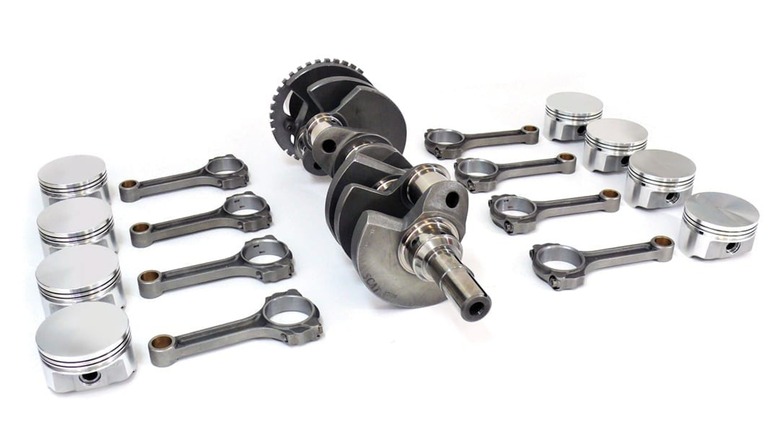How Much Boost Can A 6.4L HEMI Handle?
We may receive a commission on purchases made from links.
With the conclusion of Chrysler HEMI engine production, vehicles equipped with Hellcat HEMI Mopars on dealer lots are Unicorn-rare and pre-owned specimens have seemingly achieved instant collector status and the prices that go with it. While finding anything with a supercharged 6.2-liter HEMI between the fenders is difficult, 6.4L (392-cubic-inch) HEMI-equipped rides are plentiful in running condition and at scrap yards.
Before slapping a supercharger on top of your 392 HEMI and cranking up the boost pressure, there are some things you should consider. The amount of boost an engine can handle or horsepower it can reliably produce depends largely on its foundation. The first components that come together when assembling an automobile engine comprise its rotating assembly: the engine block, crankshaft, connecting rods, and pistons.
The strongest versions of these components are more expensive, so whenever possible, automakers opt to use the cheaper versions that can handle the designed power output and provide enough reliability to meet their design standards. Make no mistake, the 6.4L HEMI is not designed to handle double-digit boost pressures reliably without upgrading some key rotating assembly components.
The stock 6.4 HEMI can commonly handle boost pressures around 6 psi with some fuel system modifications, water-methane injection to keep the cylinders cool, and an accurate tune by someone knowledgeable of the intricacies of the 6.4 HEMI engine network of control modules. With a few more upgrades, boost pressure could be dialed up to 9 psi.
Why is the 6.4L HEMI boost pressure limited?
If you're looking to build a 6.4L HEMI from the ground up, Chrysler introduced the "Big Gas Engine" 6.4L block around the same time they were introduced for use in heavy-duty Ram pickups in 2015. These engine blocks, with the letters BGE or BG cast into them, are superior castings with higher nickel content and stiffer cylinder walls. Other than that, all factory 6.4 HEMI rotating assemblies are created equal except for slightly lower compression ratios in the truck version.
The 392-cubic-inch displacement derives from 4.09-inch diameter cylinders and a 3.72-inch crankshaft stroke. The forged-steel crank is held in place by cross-bolted main bearing caps. Cast hypereutectic-aluminum pistons attach to the crankshaft via powdered metal I-beam connecting rods.
While the 6.4L HEMI's cross-bolted main caps and forged-steel crankshaft are good choices for a high-output engine, the cast hypereutectic-aluminum pistons are its weak point. So, if you're dedicated to adding a supercharger to your 6.4L HEMI, swapping pistons and rods is good insurance.
How to make the 6.4 HEMI rotating assembly stronger
For comparison, the 2015 6.2-liter HEMI Hellcat V8 generates over 700 horsepower using 11.6 pounds of boost pressure. Like the 6.4L HEMI, it also features a cast-iron engine block and a forged-steel crankshaft. While both engines use powdered-metal connecting rods, the 6.2 Hellcat's rods are upgraded to forged powdered-metal. The biggest difference between their rotating assembly construction is the Hellcat's forged-aluminum-alloy pistons.
The 6.4L HEMI's hypereutectic pistons are cast from high silicon content aluminum alloy. Hypereutectic pistons resist wear, scuffing, and thermal expansion due to their higher silicon content. While those are all good traits in a piston, their hardness makes them brittle, and that can result in failure when detonation occurs inside the combustion chamber. Forged-aluminum pistons are also made from aluminum alloys containing varying amounts of silicon but the forging process versus casting makes them more resistant to detonation.
Swapping the 6.4L HEMI's cast pistons for forged versions requires the complete disassembly of the engine. It's not an easy task for most DIY mechanics but it's doable with the right tools, enough time, and patience. You can even buy a set of Manley forged pistons on Amazon, but other options are plentiful. The Forged Rotating Assembly from Scat Crankshafts, for example, features a complete set of forged pistons, rods, a new crankshaft, piston rings, and required bearings.


